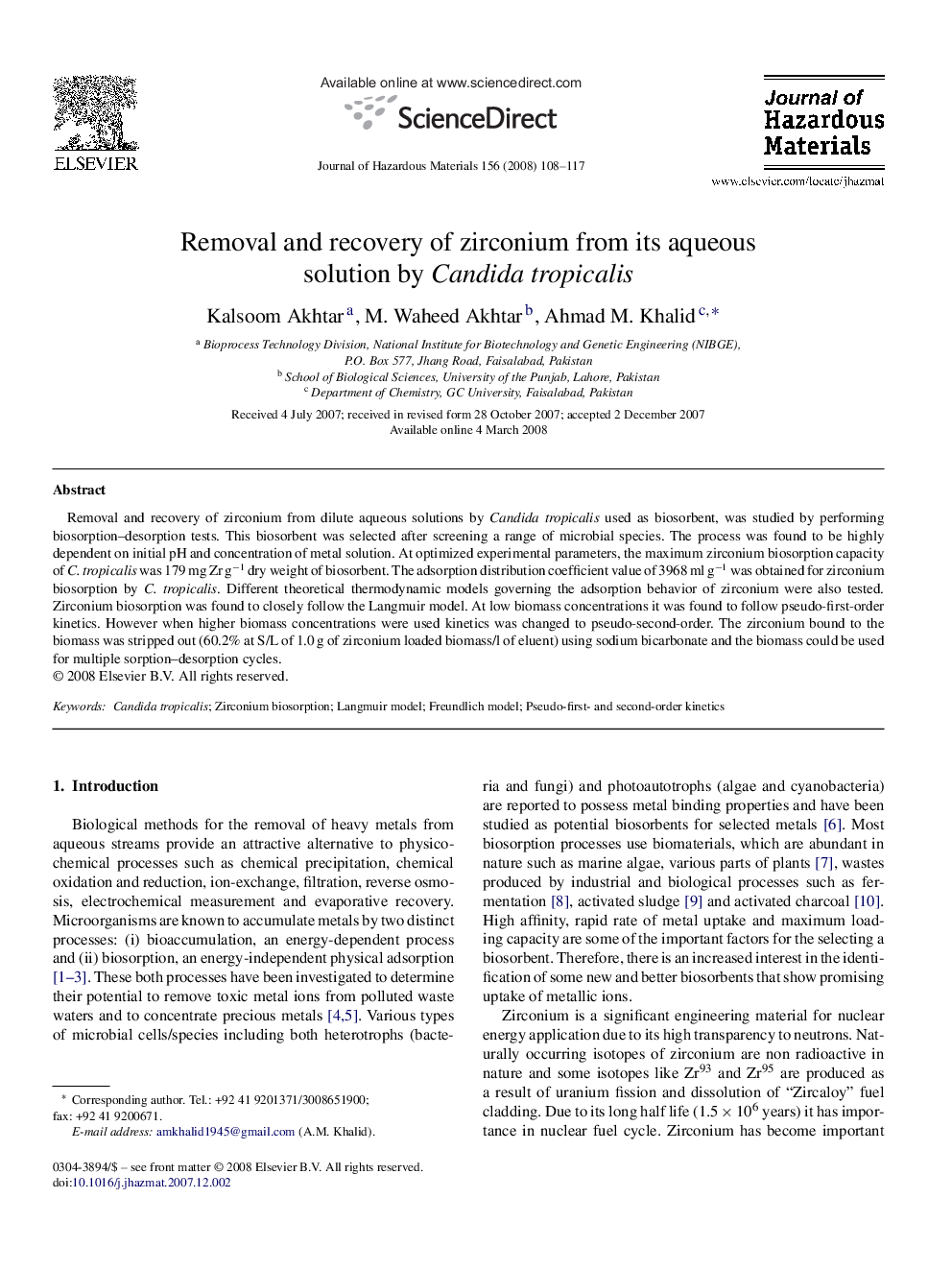| Article ID | Journal | Published Year | Pages | File Type |
|---|---|---|---|---|
| 583217 | Journal of Hazardous Materials | 2008 | 10 Pages |
Abstract
Removal and recovery of zirconium from dilute aqueous solutions by Candida tropicalis used as biosorbent, was studied by performing biosorption-desorption tests. This biosorbent was selected after screening a range of microbial species. The process was found to be highly dependent on initial pH and concentration of metal solution. At optimized experimental parameters, the maximum zirconium biosorption capacity of C. tropicalis was 179 mg Zr gâ1 dry weight of biosorbent. The adsorption distribution coefficient value of 3968 ml gâ1 was obtained for zirconium biosorption by C. tropicalis. Different theoretical thermodynamic models governing the adsorption behavior of zirconium were also tested. Zirconium biosorption was found to closely follow the Langmuir model. At low biomass concentrations it was found to follow pseudo-first-order kinetics. However when higher biomass concentrations were used kinetics was changed to pseudo-second-order. The zirconium bound to the biomass was stripped out (60.2% at S/L of 1.0 g of zirconium loaded biomass/l of eluent) using sodium bicarbonate and the biomass could be used for multiple sorption-desorption cycles.
Related Topics
Physical Sciences and Engineering
Chemical Engineering
Chemical Health and Safety
Authors
Kalsoom Akhtar, M. Waheed Akhtar, Ahmad M. Khalid,
